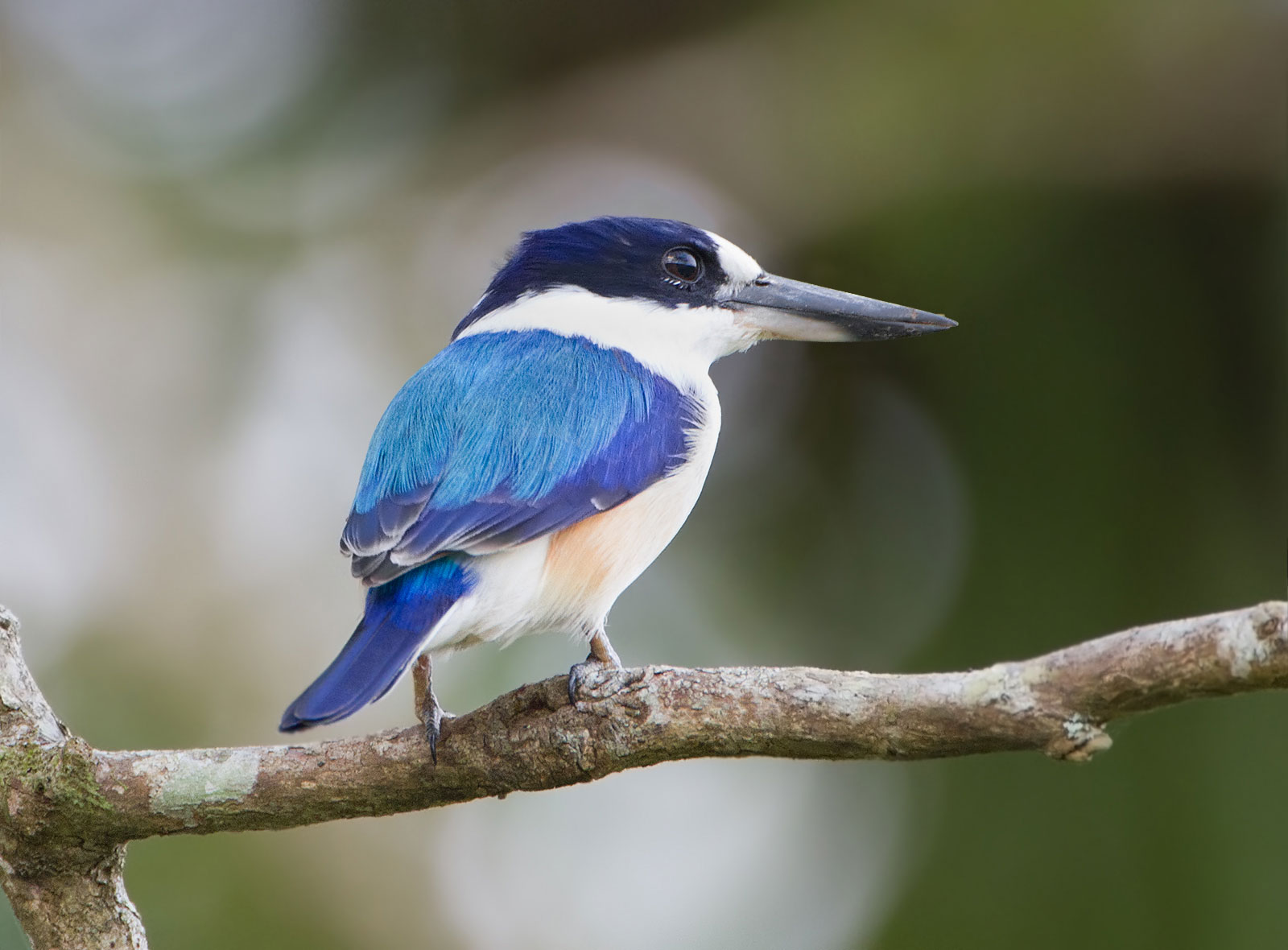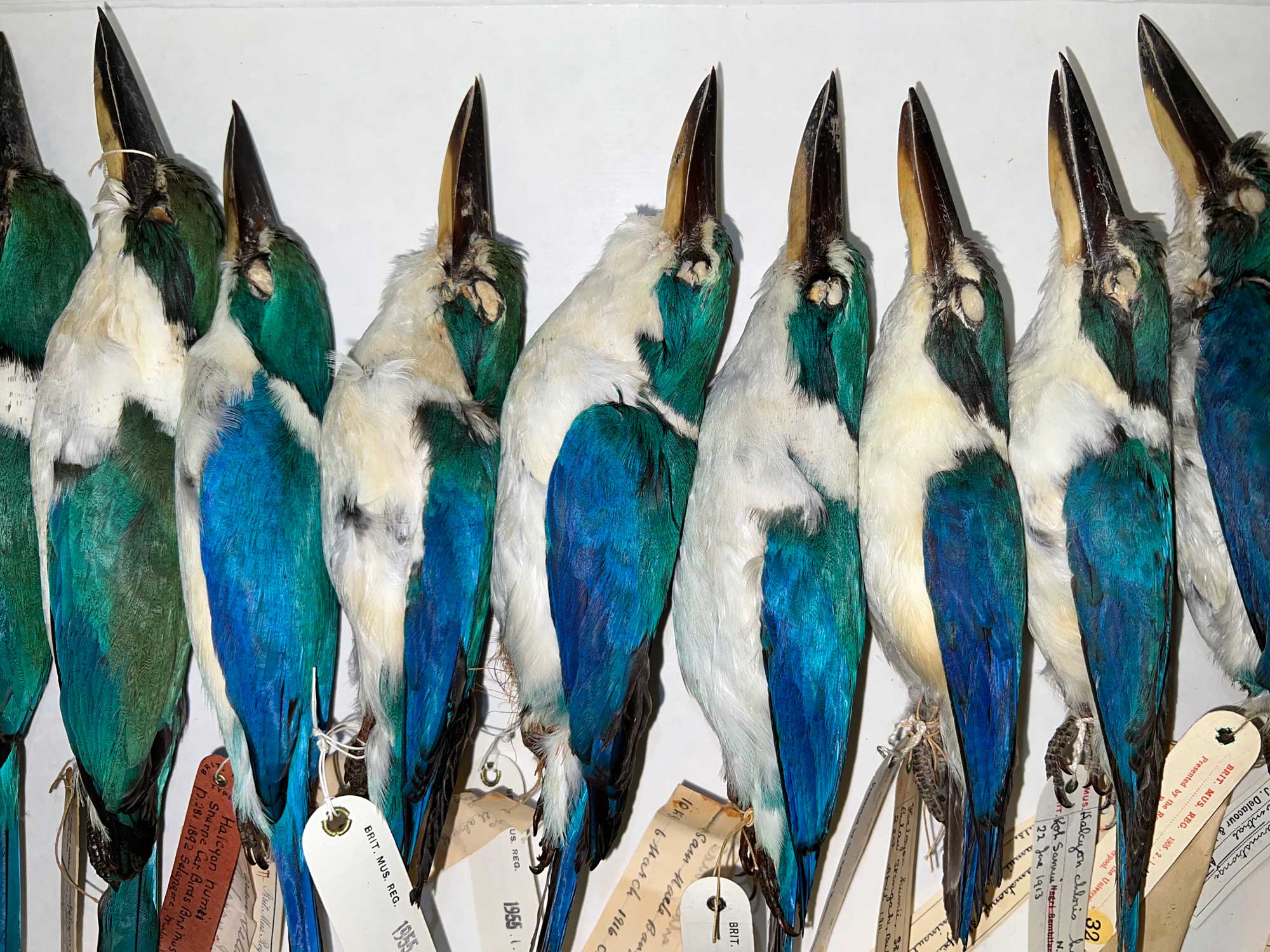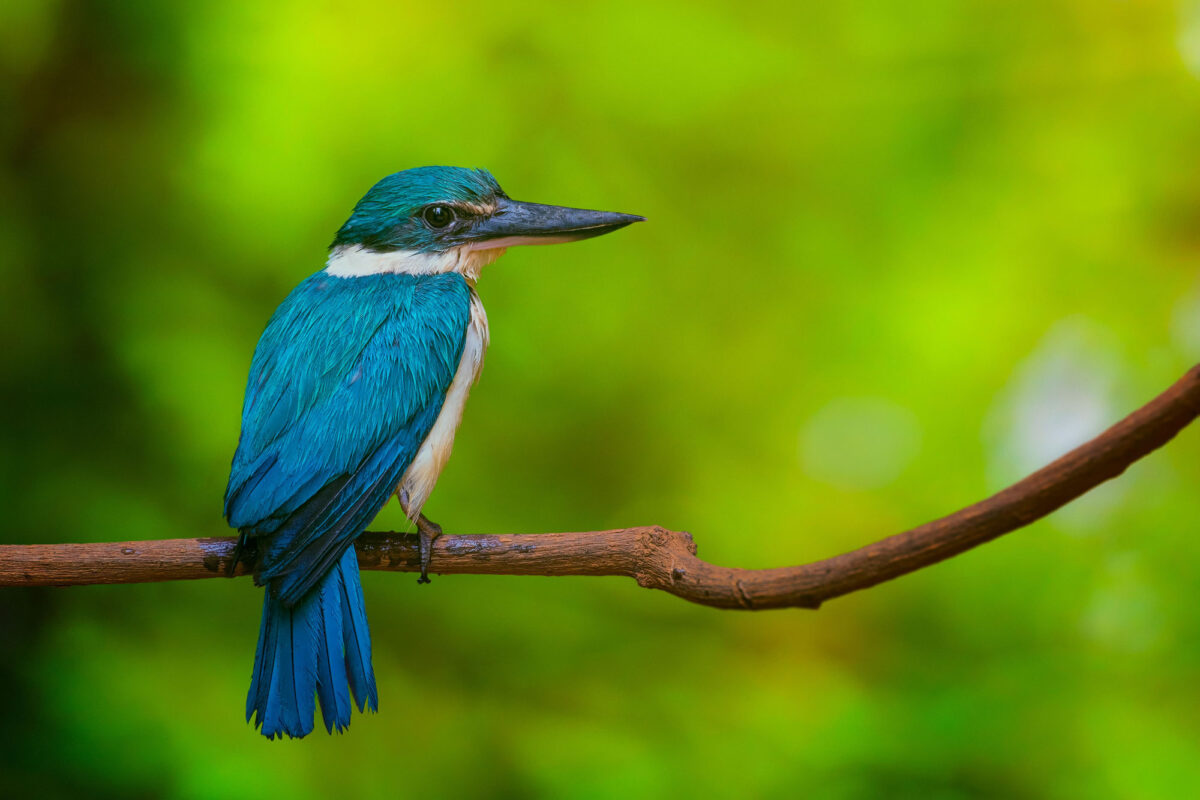Introduction
NOTE (March 25, 2024): This resource is currently under construction. Changes are being made to the website on an ongoing basis. Check back periodically to see what's new!
This section of the Evolution: Earth@Home website focuses on the work of a team of researchers based at the the University of New Mexico Museum of Southwestern Biology in Albuquerque, New Mexico, and the Field Museum of Natural History in Chicago, Illinois. These scientists are studying Australo-Pacific kingfishers (genus Todiramphus), colorful birds with large beaks that are found in Southeast Asia to Australia, New Zealand, and on other islands in the Pacific Ocean. The scientists are studying these birds to learn about how new bird species emerge on islands, how climate change is impacting the birds, and how invasive species affect the birds.
Much of the work of these scientists is done in museums. Many people may think of natural history museums as places to visit to see wildlife dioramas and exhibits of fossils, rocks and minerals, and other types of artifacts. However, exhibits are only part of what museums do for science and the public. Many natural history museums, both large and small, are important centers of scientific research. They house large collections of specimens, like rocks, fossils, minerals, animals, plants, and objects crafted by humans. Scientists have often assembled these collections over generations, and museums preserve them so that present and future scientists can study them to answer many types of research questions. Museums may also have laboratories for scientists to work in. Often, their discoveries are shared with the public through the press and through museum-based exhibits and educational programs.
Scientists at museums do important work locally, nationally, and globally. Some of the research that these scientists have done includes working with local zoos and other organizations in species conservation and working on disease identification. It is not only scientists who work in and enrich museums. Many other people, including museum volunteers, are very important in making museums successful and helping them fulfill their missions of research and public education.
Header image: A white-collared kingfisher on a branch (Todiramphus chloris) perched on a branch, Misamis Oriental, the Philippines. Photo by Kirkamon Guapo Cabello (Wikimedia Commons, Creative Commons Attribution-Share Alike 4.0 International license, image resized).
Introduction to kingfishers
An introduction to kingfishers, including basic information about kingfishers, an overview of Australo-Pacific kingfishers (Todiramphus), why scientists are interested in studying Australo-Pacific kingfishers, and fun facts about kingfishers.

Kingfisher Virtual Collections Experience
Experience the process of studying Australo-Pacific kingfishers from field collecting to curation at the museum.

Museums at work for the community and the world
Examples of other projects that museums have worked on locally in New Mexico, U.S.A., as well as nationally and internationally to assist conservation efforts and identify and fight viral diseases.
Spotlight on the researchers
Brief explanation.
Teaching resources
Brief explanation
Additional resources
Links to additional resources about kingfishers, the ethics of collecting live specimens, the use of museums in research, and further information about the researchers featured on this page.

Credits
Funding
Development of this section of Earth@Home is supported by grants from the National Science Foundation (2112467 and 2112468) to Michael Anderson, Chad Eliason, Shannon Hackett, Corinne Myers, and Robert Ross. The views, findings, conclusions, or recommendations expressed in this website do not necessarily represent those of the National Science Foundation.



